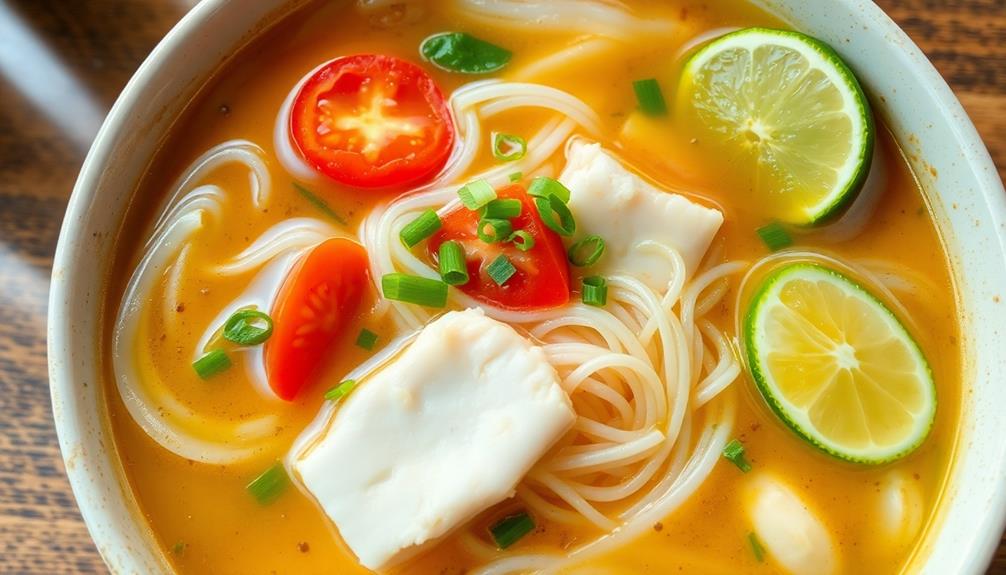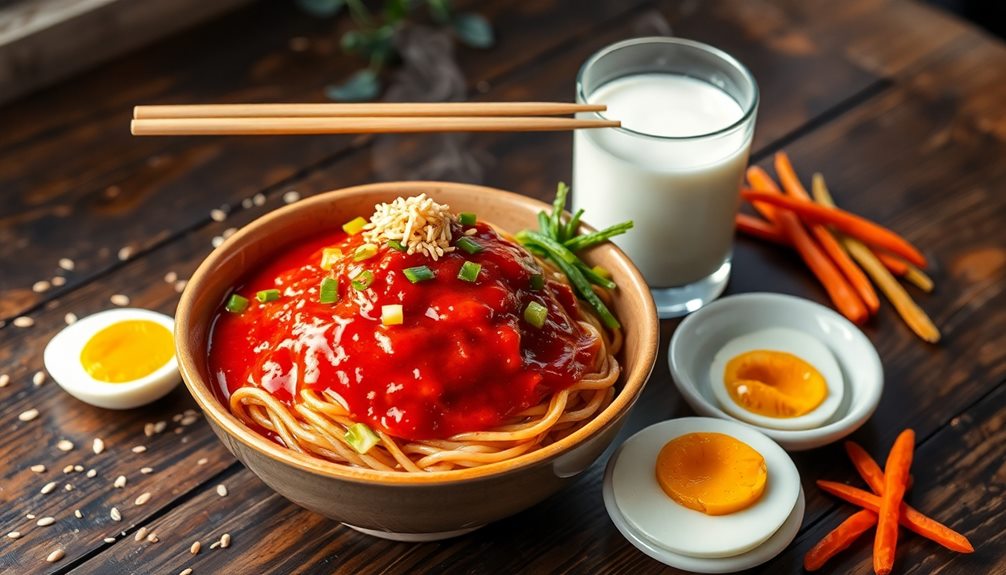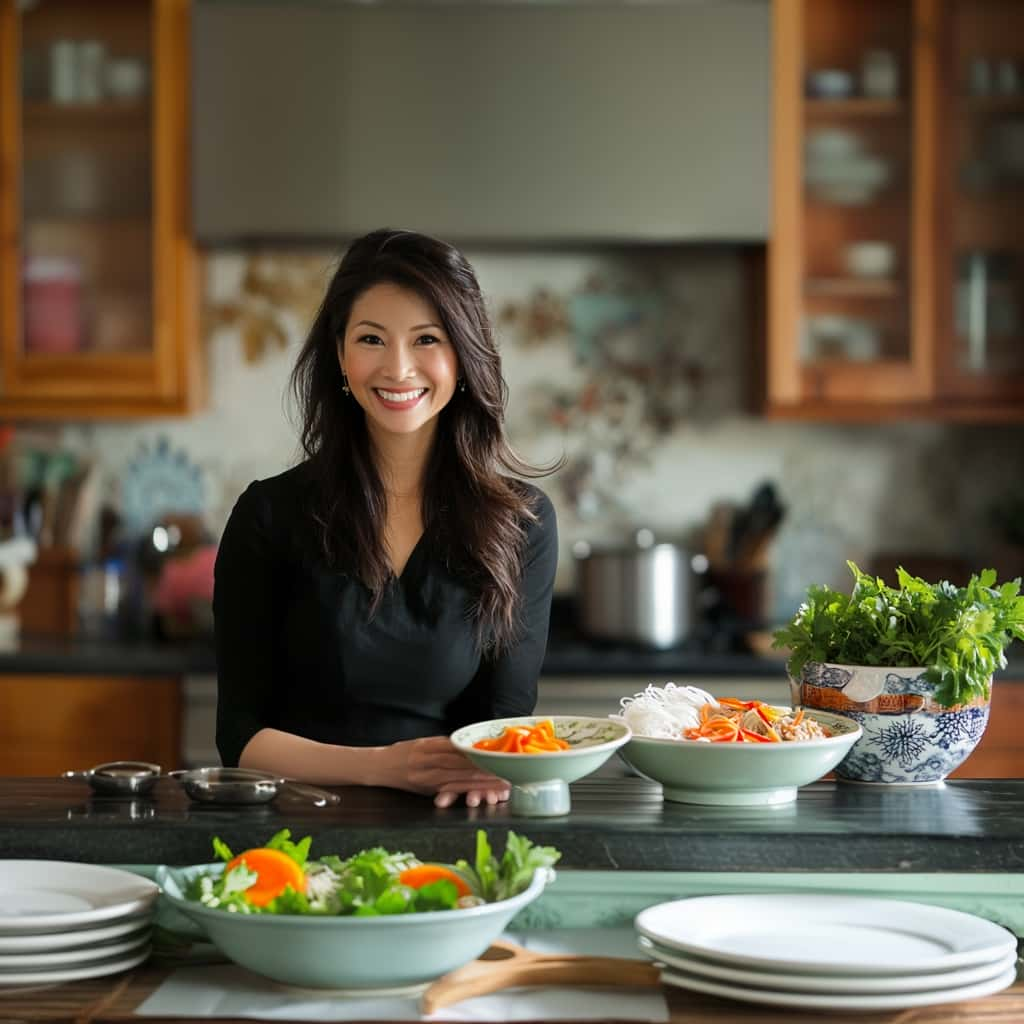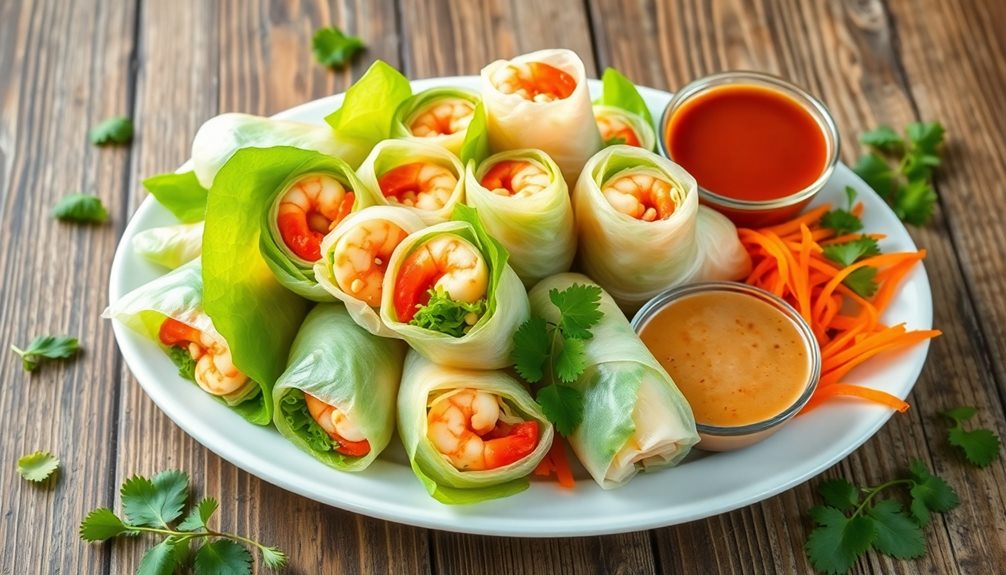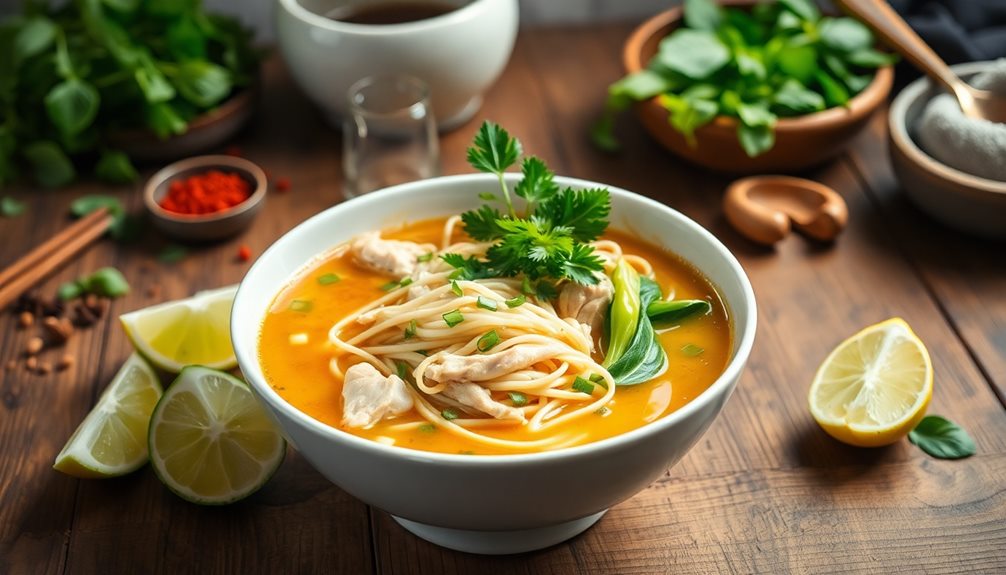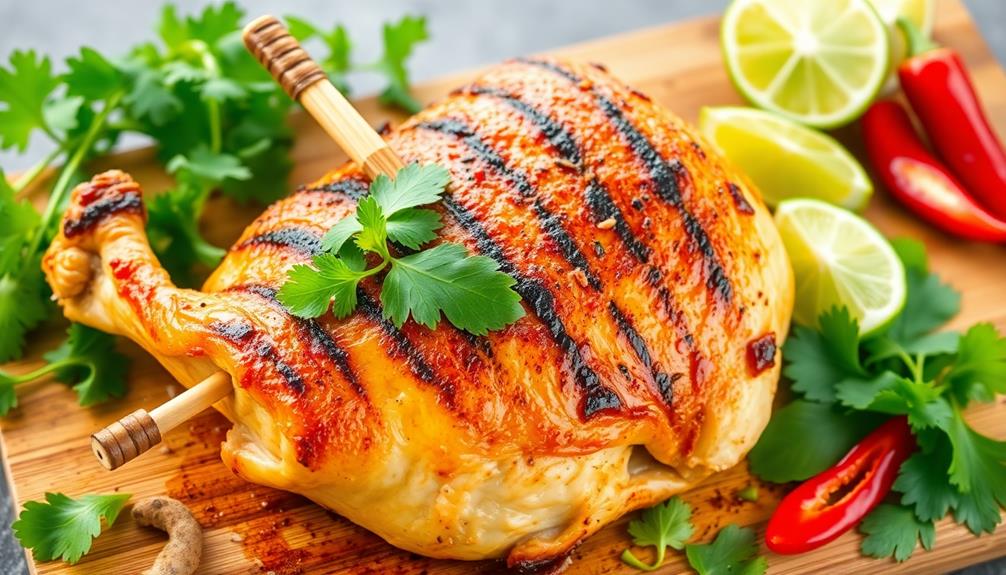You've got to try bun ca, the mouthwatering Vietnamese fish noodle soup! This centuries-old dish is a cultural treasure, passed down through generations with unique family recipes. The fragrant broth, made from simmered fish and pork bones, blends beautifully with tender fish and chewy rice noodles. Garnished with fresh herbs, lime, and chilies, each spoonful transports you to the bustling streets of Vietnam. Bun ca is a staple in festive gatherings, reflecting the importance of quality ingredients in Vietnamese cuisine. This delightful dish is not only delicious but also nutritious, making it a great choice for a satisfying and healthy meal. Let's dive deeper into the captivating world of bun ca! Beyond its irresistible flavors, bun ca showcases the harmonious balance that defines Vietnamese cuisine—freshness, texture, and a touch of spice. While this fish noodle soup takes center stage, it pairs wonderfully with other culinary delights, such as vietnamese stirfried dishes, creating a feast that satisfies every craving. Whether enjoyed at a local market stall or a family dinner, bun ca offers a heartfelt taste of Vietnam’s rich culinary heritage.
Key Takeaways
- Bun ca is a traditional Vietnamese fish noodle soup with a long history, rooted in the culinary heritage of central Vietnam.
- The dish features a fragrant broth made from simmered fish, shrimp, and pork bones, complementing tender fish and chewy rice vermicelli noodles.
- Bun ca is deeply ingrained in Vietnamese culture, often enjoyed in family gatherings and street food stalls, symbolizing the country's culinary diversity.
- The recipe has been passed down through generations, with unique family variations, showcasing the authenticity and quality of the dish.
- Bun ca is gaining global recognition for its refreshing flavors, nutritional value, and versatility as a hearty meal or light dish.
History

Originating in the central region of Vietnam, bun ca, a traditional Vietnamese fish noodle soup, has long been a staple in the country's culinary landscape.
It's a dish that's been passed down through generations, each family putting their own unique spin on the recipe. You'll find that the broth is typically made from a blend of fish, shrimp, and pork bones, simmered for hours to extract every last bit of flavor.
The noodles used are thin, vermicelli-style rice noodles that perfectly complement the delicate fish and aromatic herbs.
What really sets bun ca apart is the variety of toppings you'll find. From crispy fried fish to fresh herbs and crunchy veggies, each bite is a symphony of textures and flavors.
It's a dish that's not only delicious but also deeply rooted in Vietnamese culture and tradition. Whether you're enjoying it on a busy street corner or in the comfort of your own home, bun ca is sure to leave you craving more.
Recipe
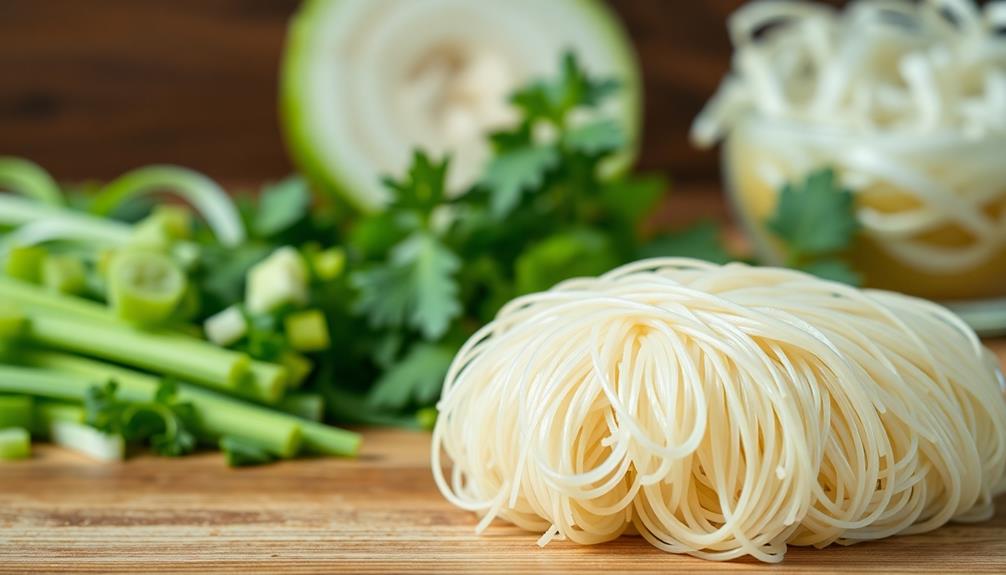
Bun Ca is a beloved Vietnamese noodle soup that features a delicate, fragrant broth and tender fish. This dish is a staple of Vietnamese cuisine, often enjoyed as a comforting meal or a refreshing starter.
The key to an authentic Bun Ca lies in the preparation of the broth. A carefully crafted broth, simmered with a blend of aromatic herbs and spices, is the foundation for this dish. The combination of flavors, from the slight sweetness of the fish to the salty and tangy notes of the broth, creates a harmonious and satisfying balance.
Ingredients:
- 1 lb white fish, such as tilapia or catfish, cut into bite-sized pieces
- 8 oz rice vermicelli noodles
- 6 cups fish or chicken stock
- 2 tablespoons fish sauce
- 2 tablespoons lime juice
- 1 tablespoon sugar
- 2 cloves garlic, minced
- 1 inch fresh ginger, peeled and minced
- 1 tablespoon vegetable oil
- 1 cup thinly sliced cabbage
- 1 cup bean sprouts
- 2 green onions, sliced
- 1/4 cup chopped cilantro
- Lime wedges for serving
Instructions:
In a large pot, bring the stock to a simmer over medium heat. Add the fish sauce, lime juice, sugar, garlic, and ginger. Gently add the fish pieces and simmer for 5-7 minutes, or until the fish is cooked through and flakes easily.
Meanwhile, prepare the rice noodles according to the package instructions. Divide the cooked noodles among serving bowls, then ladle the hot broth and fish over the top. Garnish with cabbage, bean sprouts, green onions, and cilantro. Serve with lime wedges on the side.
For best results, use high-quality fish stock and fresh, locally-sourced ingredients. The delicate balance of flavors in Bun Ca can be enhanced by adjusting the seasoning to your personal taste preferences. Enjoy this Vietnamese delight as a comforting and satisfying meal.
Cooking Steps
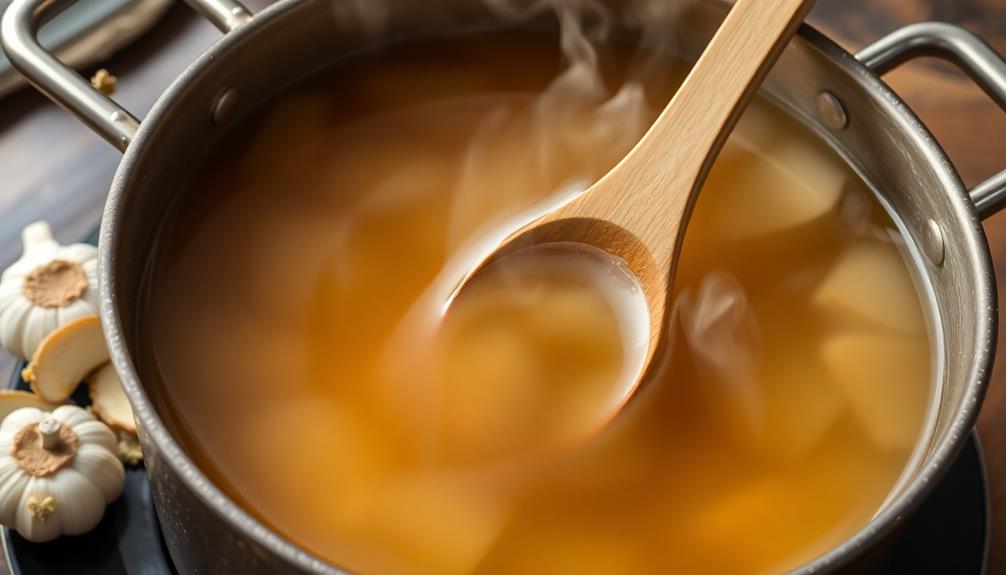
First, you'll simmer the fish to create a flavorful broth.
Then, you'll add in your veggies for some crunch and color.
Finally, don't forget the vermicelli noodles – they're the star of this delightful dish!
Finish it off with your favorite seasonings and fresh herbs for a burst of Vietnamese flavor.
Step 1. Prepare Broth by Simmering Fish
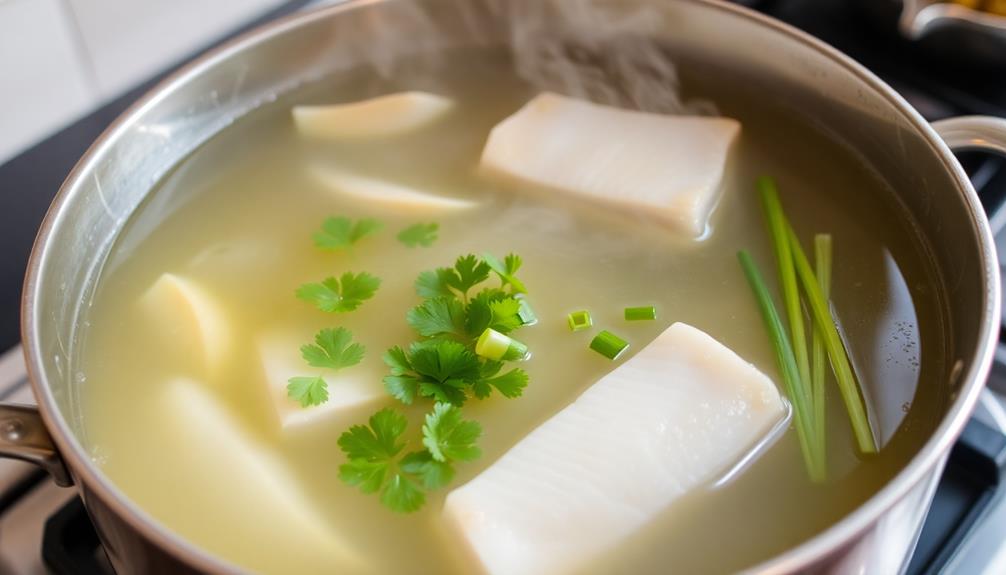
Preparing the broth by simmering the fish is a crucial step in crafting authentic bun ca. First, gather your fresh fish fillets – typically catfish or tilapia work wonderfully.
Gently place the fish into a large pot, then pour in enough water to cover them completely. Bring the mixture to a gentle simmer over medium heat, and let it bubble away for 20-30 minutes. As the fish cooks, its flavors will infuse the broth, creating a rich, savory base for your noodle soup.
Be sure to skim any foam or impurities that rise to the surface, ensuring a clear, clean broth. Once the fish is cooked through, use a slotted spoon to carefully remove the fillets from the pot.
Shred or flake the fish, then set it aside – you'll add it back in later. Now, you're ready to season the broth to perfection, taking your bun ca to the next level of deliciousness!
Step 2. Add Vegetables

With the fish-infused broth ready, it's time to add the vegetables that bring vibrant color and fresh flavors to your bun ca.
First, thinly slice some crisp cabbage and carrots. These veggies will add a satisfying crunch to each bite.
Next, chop up some fragrant cilantro and green onions. Their aromatic notes will complement the savory broth perfectly.
Don't forget the bean sprouts! Their crunchy texture and mild taste will balance out the richness of the soup.
Now, it's time to assemble your bowl. Start by placing the rice noodles in the base.
Ladle the hot broth over the top, then arrange the sliced cabbage, carrots, cilantro, green onions, and bean sprouts around the edges.
The result is a visually stunning and flavor-packed bowl of bun ca that's sure to delight your senses.
Get ready to enjoy a true taste of Vietnam in your own home!
Step 3. Add Vermicelli Noodles
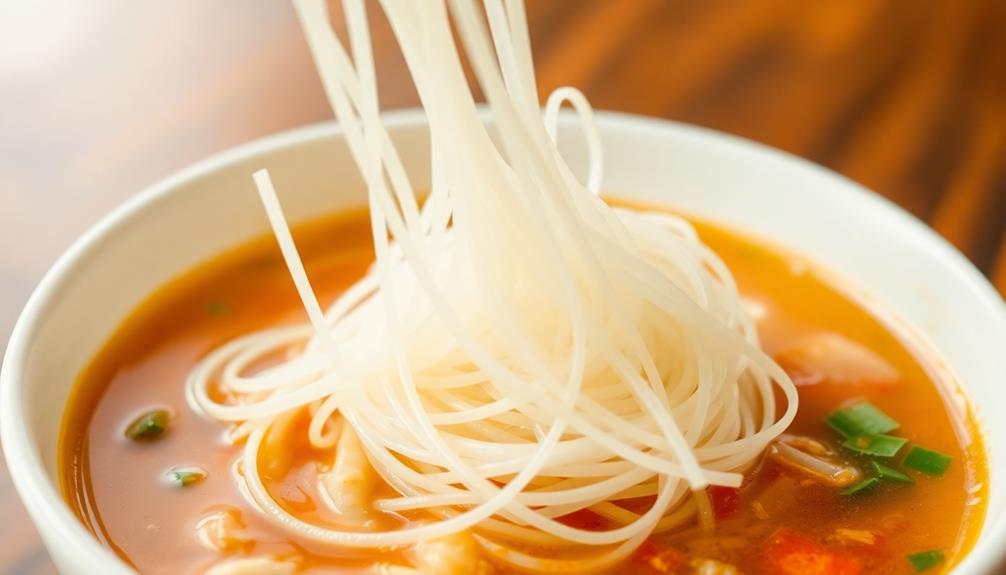
Before adding the vegetables, you'll need to prepare the vermicelli noodles. Don't worry – it's a breeze! Start by bringing a large pot of water to a boil.
Once it's bubbling, carefully add the vermicelli noodles. Let them cook for about 5-7 minutes, stirring occasionally, until they're tender and delicious.
Drain the noodles in a colander and give them a quick rinse with cool water. This helps them from sticking together.
Now, you're ready to add the noodles to your bun ca soup! Gently place them in the hot broth, allowing the flavors to mingle. The vermicelli will soak up all the tasty goodness.
For a final touch, you can garnish your bun ca with fresh herbs like cilantro or Thai basil.
The vermicelli noodles create the perfect base for this vibrant, flavorful Vietnamese dish. Get ready to slurp up every last bite!
Step 4. Add Desired Seasonings
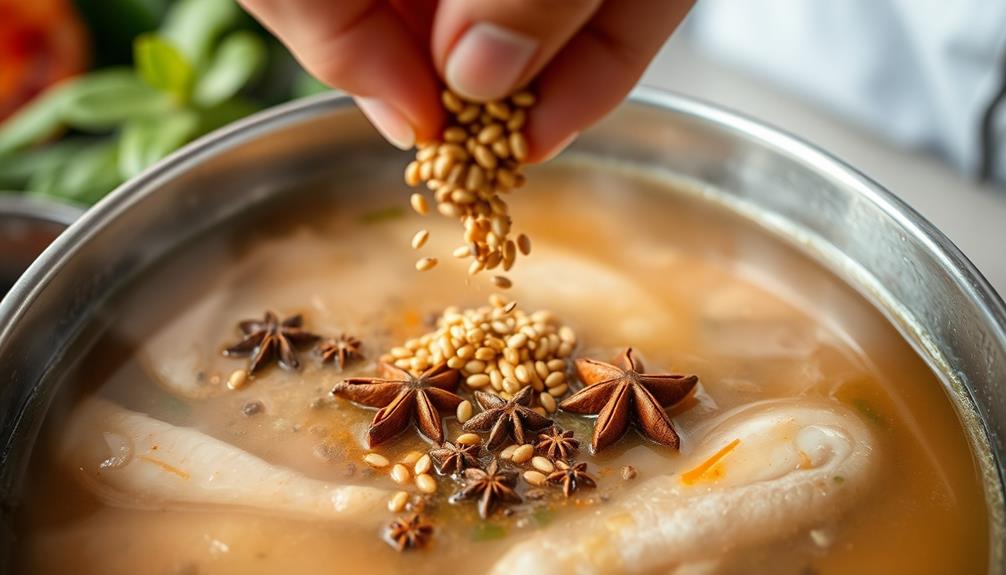
Once you've added the vermicelli noodles, it's time to season the bun ca to your liking. The great thing about this dish is that you can customize the flavors to your personal taste.
Start by sprinkling in some freshly chopped scallions and cilantro. Their bright, herbaceous notes will add a wonderful layer of flavor.
Next, you'll want to add a few dashes of fish sauce. This salty, umami-rich liquid will enhance the overall savory profile of the soup. Be careful not to add too much, as a little goes a long way.
You can also include a squeeze of fresh lime juice to brighten up the dish and balance the flavors.
If you're in the mood for a little heat, stir in some thinly sliced Thai chilies or a spoonful of sriracha. The fiery kick will perfectly complement the delicate sweetness of the fish.
Step 5. Garnish With Fresh Herbs

After you've seasoned the bun ca with the perfect blend of flavors, it's time to turn your attention to the fresh herbs that will serve as the crowning glory.
Pile on a colorful assortment of fragrant herbs, like mint, cilantro, and Thai basil. Their vibrant greens and aromatic leaves will elevate the dish, adding a refreshing punch of flavor.
Don't be shy – load up those steaming noodles and tender fish with as many herbs as you like! The more the merrier, as they'll balance the richness of the broth and lend a lively touch.
Tear the leaves gently with your fingers to release their essential oils, then scatter them over the top.
Final Thoughts
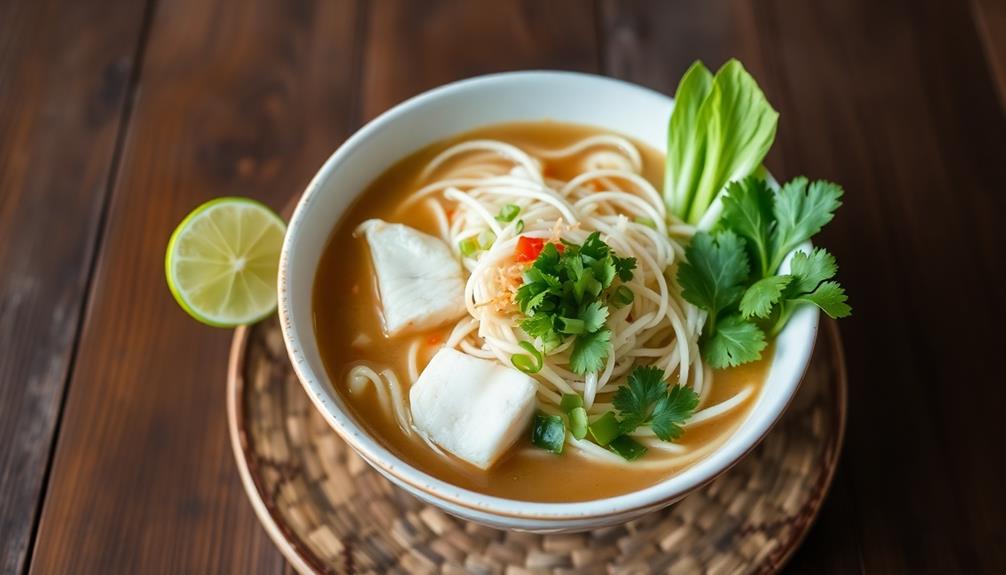
Bun ca, the Vietnamese fish noodle soup, is a delectable dish that captures the essence of Vietnamese culinary artistry. With its aromatic broth, tender fish, and chewy noodles, bun ca is a comforting and satisfying meal that will transport your taste buds to the vibrant streets of Vietnam.
The fresh herbs, crisp veggies, and zesty lime add a burst of flavor and texture, making each spoonful a delightful experience. Whether you're enjoying it on a cool day or relishing it as a refreshing lunch, bun ca is a dish that truly shines.
From the first sip to the last slurp, you'll be left craving more of this Vietnamese treasure. So why not give it a try? Dive into the world of bun ca and savor the authentic flavors that have captivated taste buds around the globe.
This dish is sure to become a new favorite in your culinary repertoire.
Frequently Asked Questions
What Type of Fish Is Typically Used in Bun Ca?
Typically, you'll find that bun ca, a Vietnamese fish noodle soup, is made with freshwater fish like catfish, basa, or tilapia. These mild-flavored fish perfectly complement the savory broth and chewy rice noodles in this popular Vietnamese dish.
Is Bun Ca Suitable for Vegetarians or Vegans?
No, bun ca is not suitable for vegetarians or vegans, as it's a traditional Vietnamese dish made with freshwater fish. However, you could try a vegetarian or vegan version by substituting the fish with tofu or mushrooms.
How Long Can Leftover Bun Ca Be Stored?
You can store leftover bun ca in the refrigerator for up to 3-4 days. Be sure to keep it in an airtight container and reheat it thoroughly before serving to ensure food safety.
What Are Some Common Garnishes or Toppings for Bun Ca?
Common garnishes or toppings for bun ca include fresh herbs like cilantro, mint, and Asian basil. You can also add sliced chili peppers, roasted peanuts, and a squeeze of lime juice to enhance the flavors.
Is Bun Ca a Spicy Dish, and Can the Heat Be Adjusted?
Bun ca isn't necessarily a spicy dish, but you can adjust the heat level to your preference. The broth is typically mild, but you can add chili sauce or other spicy condiments to make it as fiery as you like.
